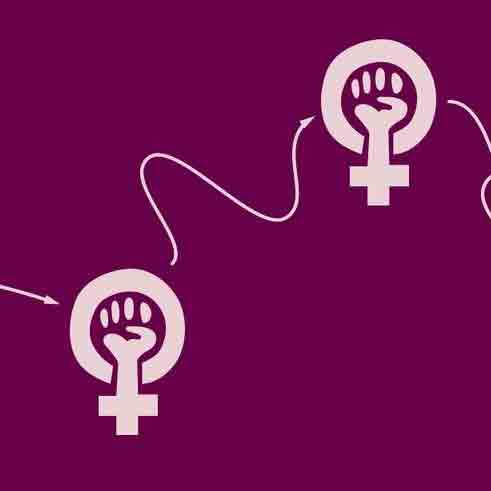When it comes to sex research, there’s no institution that looms larger than the
Kinsey Institute. For decades, it has shaped our understanding of sex, gender, and sexuality, so we are thrilled to interview one of their researchers.
Dr. Jessica Hille is a gender and sexuality scholar and the Assistant Director for Education at the Kinsey Institute for Research in Sex, Gender, and Reproduction. Her research focuses on
asexuality and ace spectrum identities, sexual pleasure and orgasm, and critical theory. She will be teaching an
online course (open to the public!) about human sexuality this summer.
We talked to Dr. Hille about the ace spectrum and the history, myths, and tensions surrounding the community.
What does the term "graysexual" mean?
People who identify as graysexual (or greysexual) report only rarely experiencing sexual attraction. This is also referred to as gray-a, gray-asexual, gray asexuality, gray-ace, and grace.
Demisexuality is sometimes considered a type of graysexuality (or greysexuality). Demisexual means experiencing sexual attraction only after forming a deep romantic or strong emotional connection to someone – this term is sometimes included under graysexuality as part of the spectrum of identities in “the gray area” between asexual and non-asexual.
Graysexual people can and do have sex and experience romantic attraction. For example, someone could be graysexual and panromantic, meaning that they rarely experience sexual attraction or sexual desire but may be romantically attracted to people regardless of gender. They could also be graysexual, and at the same time demiromantic, heteroromantic, aromantic or biromantic. While differentiating between romantic orientation and sexual attraction can be useful, not everyone on the ace spectrum uses this model.
Is this a relatively new sexual identity category?
The experience of graysexuality likely existed before the term, but unlike more familiar labels like bisexuality and pansexuality, the term “graysexuality” itself is relatively new. The term graysexual, and its use as an identity category, became popular in the contemporary asexual/ace community over the last two decades. The contemporary ace community arose primarily online through communities like
AVEN (the Asexual Visibility and Education Network) and social media, but there are archival records of people using the term “asexual” before the internet existed.
“The experience of graysexuality likely existed before the term, but the label itself is relatively new.”
How does graysexuality relate to the asexuality spectrum?
Graysexual generally refers to people who are on the asexual spectrum (or ace spectrum) but do not identify as asexual. It covers the “gray area” between asexual and non-asexual (sometimes referred to as allosexual). The ace community, like any community, unfortunately has people who try to act as gatekeepers and exclude graysexual folks as not “asexual enough.” Many ace individuals and groups, however, consider people on the ace spectrum part of the ace community along with asexuals. This debate is similar to those about whether bisexual people belong in the gay community. I think identifying as graysexual or asexual makes you part of the ace community, just as I think the B belongs in the LGBTQ community.
This is not to say that graysexuality is the
same as asexuality. My
research has found significant difference between graysexual and asexual groups in terms of behavioral histories and desire for sex. Of course the experiences of asexual people are still important to understand, and important work has been done exploring asexual identity and experiences. But these experiences cannot necessarily be generalized to the rest of the ace community. Leaving graysexuals out of studies of the ace community would be like only studying gay men to understand the LGBTQ community.
What’s the most inclusive language to use when discussing the asexuality spectrum?
Because the ace community arose largely through self-identification, it has allowed people to find and create terms that work for them and speak to their experiences. As with any aspect of identity, it’s important to respect the terms people use for themselves. I like using “ace community” instead of “asexual community” because it doesn’t center asexuality specifically. There’s some debate about what term to use for non-asexual people, including allosexual and zedsexual. These terms are still developing and evolving, and the ace community has produced a wealth of new terminology for talking about sexuality, romance, and attraction.
What are some of the most common myths about the ace community?
Because our society has tied emotional intimacy so tightly to sex, some people assume that people who are asexual or graysexual, or anywhere on the ace spectrum, don’t have sexual interests, don’t engage in sexual activity, and/or aren’t interested in romantic relationships.
Some people are not, but many people in this community do participate in consensual sex, date, and form deep emotional attachments. Others have no interest in romance or sexual relationships. It’s a very diverse community. Also, while some people in the ace community have experienced abuse and trauma, it would be a mistake to assume that trauma causes asexuality, or that all asexual and ace spectrum people have histories of trauma that “make” them asexual.




























